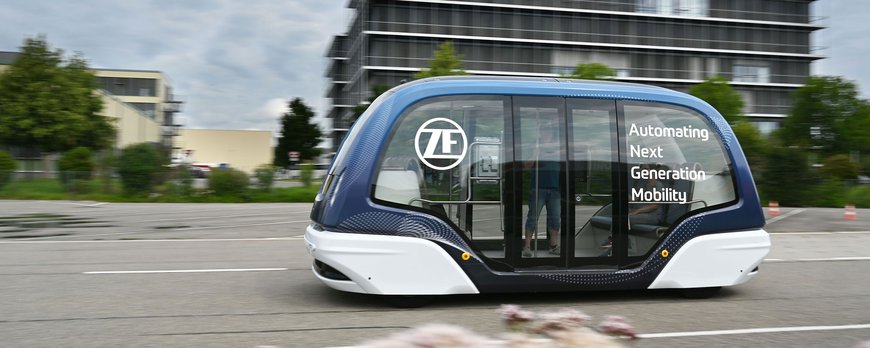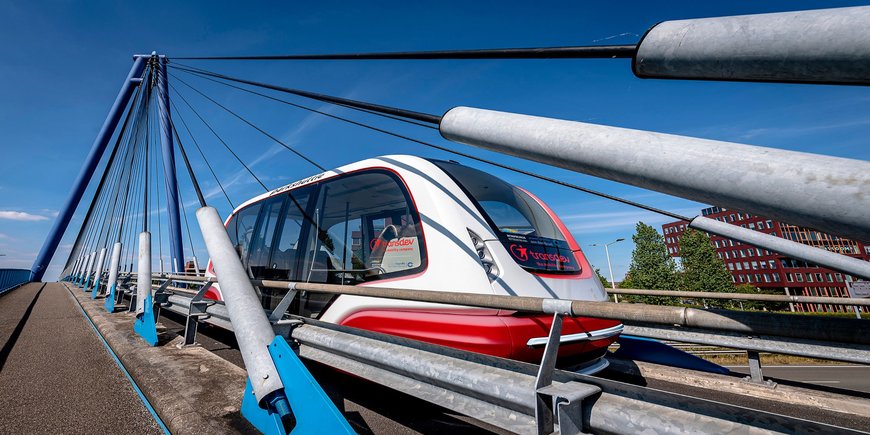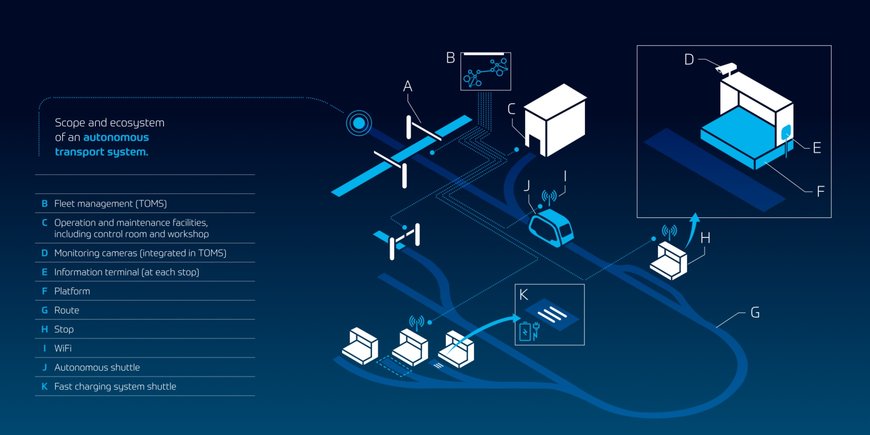www.auto-innovations.net
19
'22
Written on Modified on
ZF News
Autonomous Shuttles: ZF is now Riding Past the Traffic Jam
In order to further advance the modern transport concept, ZF has significantly expanded its range: The company no longer only offers the shuttle vehicles, but a complete all-round carefree package for cities and urban mobility operators.

Author: Andreas Neemann
The autonomous vehicles drive independently over the two-kilometer-long, segregated lane. Since 1999, a precursor system from 2getthere, a company which ZF acquired in 2019 has been in operation in Rivium. The service is currently being converted to ZF’s GRT3 shuttle generation. The vehicle can transport 22 passengers and travel at speeds of up to 40 km/h. In various projects around the world, autonomous transport systems from ZF have transported more than 14 million people since 1997 and covered over 100 million kilometers autonomously.
City Traffic at the Emission Limit
Comparable driverless systems have already mastered the transport of people in some theme parks, airports and also on closed areas such as campuses. In the coming years, they will increasingly contribute to sustainable mobility in cities and improve connections to rural areas.
In fact, many metropolises and their residents are groaning under the weight of the already intensive inner-city individual traffic. New York City road users lost 100 hours in a traffic jam in 2020 — only in Bogota and Bucharest things do get worse. An incredible waste of time. The associated environmental consequences are also alarming: According to Organization for Economic Cooperation and Development (OECD), urban traffic is responsible for 40 percent of the climate-damaging emissions caused by passenger transport worldwide. Many metropolises in Europe have committed to meeting climate targets in order to do their part for the Paris Climate Agreement. Urban traffic, especially with private internal combustion engine powered cars, would not have to increase, but decrease according to these plans. But many cities are becoming more important for their surrounding areas. As a result, traffic also increases.

Solution: Autonomous Buses for Passenger Transport
High time for a rethink and new mobility concepts. Better today than tomorrow. "A network of autonomous, electric shuttles available via app can usefully supplement existing public transport services in cities, but also better connect rural areas to the cities," said Torsten Gollewski, Head of Autonomous Mobility Systems at ZF. This makes mobility more sustainable because it helps to reduce traffic jams and emissions and improves people's quality of life. And the best thing about it: ZF's autonomous transport systems are not a distant vision of the future but can already be implemented today.
"We have mastered the technological challenge of self-driving shuttles with a fully redundant Level 4 vehicle - based on automotive grade components,” said Gollewski. The current generation of shuttles is designed for operation in structurally separated lanes. For many cities, this application already means a relief of the crowded traffic situation, because. there are no delays for the shuttle due to traffic jams - in contrast to driving with robo taxis, which move through congested roads with regular road users. With the next generation of autonomous shuttles, ZF can cover further applications – such as autonomous shuttle operation in specially designated lanes and as a regular participant in general city traffic.
In order to further advance the modern transport concept, ZF has significantly expanded its range: The company no longer only offers the shuttle vehicles, but a complete all-round carefree package for cities and urban mobility operators. To help ensure that the autonomous shuttle system becomes the perfect solution for the respective city, ZF is already providing support in the concept phase: Which route is particularly suitable, and where would the strongest positive effects be expected? The focus is on the seamless connection with existing public transport solutions or the connection of rural regions - so that the attractive new offers help to keep the traffic flow in urban centers.
ZF is also involved in the implementation and realization of the shuttle system, including selection and installation of the fleet along with all the technology needed for its operation. This gets down to every last detail, from the charging infrastructure to the public information displays. ZF also advises on fleet management software or connectivity solutions that ensure the connection to the traffic infrastructure — such as traffic lights and speed limit displays — as well as communication with passengers via apps. Last but not least, with its aftermarket network, ZF can offer maintenance and service for autonomous vehicles in practically every corner of the world: The group has 10,000 service workshops in 115 countries.
ZF is also involved in the implementation and realization of the shuttle system, including selection and installation of the fleet along with all the technology needed for its operation. This gets down to every last detail, from the charging infrastructure to the public info displays. ZF also advises on fleet management software or connectivity solutions that ensure the connection to the traffic infrastructure - such as traffic lights and speed displays – as well as communication with passengers via apps. Last but not least, with its aftermarket network, ZF can offer maintenance and service for autonomous vehicles in practically every corner of the world: the group has 10,000 service workshops in 115 countries.

Great Market Potential for Autonomous Shuttles
In order to implement the autonomous passenger transport systems as quickly as possible, ZF is also relying on external partnerships. ZF has agreed with DB Regio on a strategic partnership to bring highly automated and autonomous bus shuttles onto the roads in Germany more quickly. The first series projects, all of which are based on concrete requests from cities or municipalities, have already been identified. With RABus, a funding project of the state of Baden-Württemberg that is scheduled to run until 2024, the two partners in Mannheim and Friedrichshafen are already on their way to implementing the shuttle applications in a residential area or in inner-city, suburban and intercity transport.
For many experts, autonomous shuttles have the potential to become one of the main modes of transport of the 21st century. According to a study by Deloitte, in 2035, 180,000 shuttles will be needed in the German metropolitan regions alone to meet urban mobility needs without causing a traffic blackout. “Autonomous shuttle transport systems will soon shape cityscapes and create new mobility systems with more convenience — a unique opportunity to make cities more livable,” said Gollewski. One thing is clear: Those who now rely on autonomous shuttles are well equipped for the future of urban mobility.
www.zf.com

